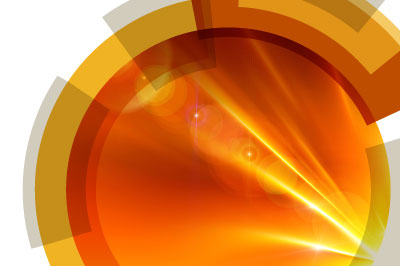Recently crystallography and spectroscopy have reached a level of experimental sophistication and theoretical and computational advancements such that it is possible to understand the structure of even the most complex molecular systems, such as, proteins. One community derives information from average atomic charge densities from X-ray data and the other from valence orbital electron densities based on vibrational spectroscopy data. The modern generation of synchrotrons and the powerful free electron lasers (X-FEL) offer new opportunities and exciting challenges in structural science, but they will require a coordinated approach of complementary methods if they are to achieve maximum impact. We are constantly improving technical and computational methods to accelerate and automate characterisation processes and this is crucial to the fields to be explored in this meeting.
This Faraday Discussion will bring together world experts in computational, crystallographic, spectroscopic, chemical, biological and numerous characterisation methods to share and enhance their expertise.
The main aim for this discussion is to bring together crystallographers and spectroscopists from chemistry, physics and biology to promote new interdisciplinary research and to benefit from complementary approaches and techniques in the rapidly emerging areas of 'time resolved studies', leading to a greater overall understanding of structural dynamics.
We hope to achieve:
In addition, the discussion meeting is expected to identify future challenges and the novel techniques yet to be developed towards addressing temporally and spatially resolved structure-function relationships in chemistry and biology.
The Faraday Division have been organising high impact Faraday Discussions in rapidly developing areas of physical chemistry and its interfaces with other scientific disciplines for over 100 years.
Faraday Discussions have a special format where research papers written by the speakers are distributed to all participants before the meeting, and most of the meeting is devoted to discussing the papers. Everyone contributes to the discussion, including presenting their own relevant research. The research papers and a record of the discussion are published in the journal Faraday Discussions.
Dynamics of the Chemical Bond
New experimental and theoretical approaches to understand chemical bonding and the changes that take place in the excited state for a number of biologically and technologically important reactions. Obtaining insights into and recording data from processes associated with changes to chemical bonds, whether that is bond breaking, formation, changes in length or inter-/intra-molecular vibrations, is key to obtaining further understanding of a wide range of chemical and biological reactions.
Time and Space Resolved Methods
Development and exploitation of high resolution time-resolved crystallographic and spectroscopic methods predominantly for reactions occurring in the solid-state and examining processes occurring on a broad range of timescales (ms-fs), including novel methodologies and interdisciplinary approaches which are transferable to the study of a wide range of molecular processes. Combining structural, spectroscopic and theoretical data (in 1D, 2D or 3D) within the reaction energy landscape/surfaces will provide complementary information and give a more complete picture of the underlying the behaviour of chemical reaction or biological process.
Local and Global Dynamics
Understanding the relationship between local and global dynamics is essential to correlate knowledge of a molecular process to those occurring within an extended structure e.g. whether a process is cooperative and affected by the surround lattice or occurs independently of the local environment. A combination of current and emerging experimental and theoretical approaches, most of which are transferable between disciplines, will be discussed to provide maximum insight into the relationship between structure and function for both chemical reactions and biological processes.
Future Challenges and Emerging Techniques
Exciting new directions for combining time resolved spectroscopic and diffraction techniques with modern theoretical approaches and looking forward to how we can exploit lab sources to XFELs in novel ways, bringing together all of the topics and ideas covered in earlier sessions to define new research approaches and inter-disciplinary collaborations.
This Faraday Discussion will bring together world experts in computational, crystallographic, spectroscopic, chemical, biological and numerous characterisation methods to share and enhance their expertise.
The main aim for this discussion is to bring together crystallographers and spectroscopists from chemistry, physics and biology to promote new interdisciplinary research and to benefit from complementary approaches and techniques in the rapidly emerging areas of 'time resolved studies', leading to a greater overall understanding of structural dynamics.
We hope to achieve:
- cross-fertilization of recent knowledge in time and length scales
- linking structural and dynamical information (derived from both the techniques) to understand function
- understanding non-equilibrium states and their impact on reactivity
- new collaborations towards solving problems jointly.
In addition, the discussion meeting is expected to identify future challenges and the novel techniques yet to be developed towards addressing temporally and spatially resolved structure-function relationships in chemistry and biology.
The Faraday Division have been organising high impact Faraday Discussions in rapidly developing areas of physical chemistry and its interfaces with other scientific disciplines for over 100 years.
Faraday Discussions have a special format where research papers written by the speakers are distributed to all participants before the meeting, and most of the meeting is devoted to discussing the papers. Everyone contributes to the discussion, including presenting their own relevant research. The research papers and a record of the discussion are published in the journal Faraday Discussions.
Dynamics of the Chemical Bond
New experimental and theoretical approaches to understand chemical bonding and the changes that take place in the excited state for a number of biologically and technologically important reactions. Obtaining insights into and recording data from processes associated with changes to chemical bonds, whether that is bond breaking, formation, changes in length or inter-/intra-molecular vibrations, is key to obtaining further understanding of a wide range of chemical and biological reactions.
Time and Space Resolved Methods
Development and exploitation of high resolution time-resolved crystallographic and spectroscopic methods predominantly for reactions occurring in the solid-state and examining processes occurring on a broad range of timescales (ms-fs), including novel methodologies and interdisciplinary approaches which are transferable to the study of a wide range of molecular processes. Combining structural, spectroscopic and theoretical data (in 1D, 2D or 3D) within the reaction energy landscape/surfaces will provide complementary information and give a more complete picture of the underlying the behaviour of chemical reaction or biological process.
Local and Global Dynamics
Understanding the relationship between local and global dynamics is essential to correlate knowledge of a molecular process to those occurring within an extended structure e.g. whether a process is cooperative and affected by the surround lattice or occurs independently of the local environment. A combination of current and emerging experimental and theoretical approaches, most of which are transferable between disciplines, will be discussed to provide maximum insight into the relationship between structure and function for both chemical reactions and biological processes.
Future Challenges and Emerging Techniques
Exciting new directions for combining time resolved spectroscopic and diffraction techniques with modern theoretical approaches and looking forward to how we can exploit lab sources to XFELs in novel ways, bringing together all of the topics and ideas covered in earlier sessions to define new research approaches and inter-disciplinary collaborations.









